Background
It doesn't matter which experiment generator you use to run your computer-based Psychology experiments the Black Box ToolKit USB response pad with 1024 position slider/fader is great for Likert Scales and Judgement and Decision Making studies.Truly plug in and play as our USB response pad appears to your computer as a second keyboard. Produces keystrokes for each
position on the slider/fader for
Likert Scales (2-32 positions) or
for finer grain judgements, types
numbers 0-1023.

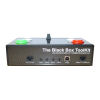
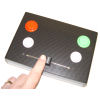
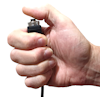
Works on any platform including iPads, Android tablets and phones.
1-4 button USB response pad with 1024 position slider/fader key features
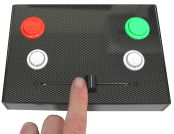
 Simply
plug into a USB port on your PC/Mac/Linux system and our response
pad with slider/fader will appear as a second keyboard. Also works
on any platform including Apple iPads, Android tablets and phones
with appropriate adapter. Press a button or slide the fader and a
standard keystroke will be sent to your experiment.
Simply
plug into a USB port on your PC/Mac/Linux system and our response
pad with slider/fader will appear as a second keyboard. Also works
on any platform including Apple iPads, Android tablets and phones
with appropriate adapter. Press a button or slide the fader and a
standard keystroke will be sent to your experiment.No need for drivers, no need to recode! Works out of the box with E-Prime, SuperLab, Presentation, Inquisit, PsychoPy or any other software that can accept standard keyboard responses.
Finished in an attractive carbon fiber effect our response box houses a 15 cm /6" horizontal fader and up to 4 buttons in a range of colors and locations.
To use the slider simply decide how many segments you would like to divide it in to. For smaller ranges, segments can range from 2-32 positions, with each position producing a single keystroke. For finer grain judgements in Judgement and Decision Making studies the slider range can be divided into 1024 segments. In this mode once the slider is stationary for a set time it will type a number between 0-1023 depending on position.
The three available modes the response pad can be run in are summarized below:
- Mode 1: Buttons produce keystrokes, 1, 2, 3 & 4.
- Slider movement produces continuous keypresses: (left)
abcdefghijklmnopqrstuvwxyz[]/;'. (right).
- Mode 2: Buttons produce keystrokes, a, b, c & d.
- Slider produces a 4 digit number followed by a return
keypress once stationary, i.e. CRLF, for each of the 1024
positions it is moved, (left) 0000 to 1023 (right).
- Mode 3: Buttons produce keystrokes, 1, 2, 3 & 4.
- Slider movement produces a keypress once stationary: (left) abcdefghijklmnopqrstuvwxyz[]/;'. (right)
Sister models without faders also available.
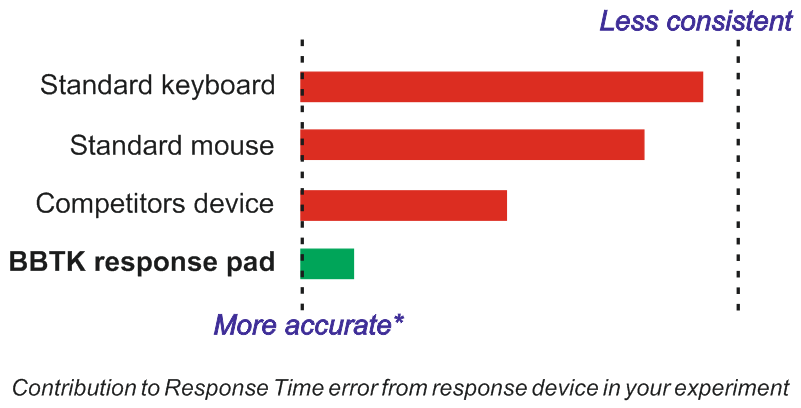 All our
response boxes & response pads aim to reduce inconsistencies
and improve your Response Time accuracy compared with using
standard keyboards, mice or competitors devices.
All our
response boxes & response pads aim to reduce inconsistencies
and improve your Response Time accuracy compared with using
standard keyboards, mice or competitors devices.*Remember although our USB response pads hardware is millisecond accurate and helps reduce RT variability in your experiments it cannot automatically correct for any mistimings that are inherent within the experiment generator or other hardware you use.
For example, if your experiment generator presents an image and does not check for a response in a timely fashion, your OS intervenes, or an anti-virus check runs, your Response Times will remain inaccurate regardless of the quality of the response device. What | Why | How
For self-validation you should independently check the accuracy and consistency of your experiment generators presentation and response timing, or system as a whole, with a Black Box ToolKit v3 together with a BBTK USB response pad.
For sub-millisecond TTL event marking of stimuli and responses, you should combine our response pad with a mBBTK v2. The unique mBBTK v2 takes over all timing duties from any experiment generator so you can be 100% sure of your presentation, synchronization and response timings.
Key features
|
|
Range of button colors, sizes and clear caps
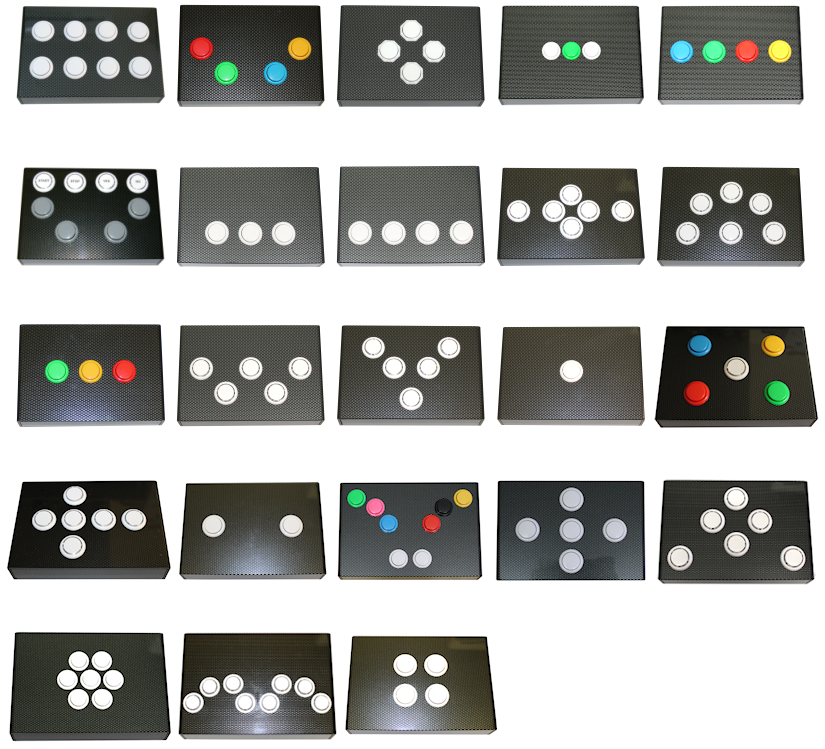 A
range of colored buttons are available to order.
A
range of colored buttons are available to order.
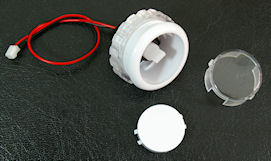 Clear
cap buttons allow you to put your own labels under a tamper-proof
clear plastic cover. Simply unscrew the button, remove the clear
cap and place your own label under the button top (21 mm dia).
Clear
cap buttons allow you to put your own labels under a tamper-proof
clear plastic cover. Simply unscrew the button, remove the clear
cap and place your own label under the button top (21 mm dia).
Clear cap buttons are available in a range of colors. The key cap is always clear to enable your participants to see your label underneath.
Smaller diameter buttons are also available on request.
Custom laser cut layouts to your own design
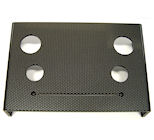 You
can customize your button layout by electing where to place
between 1 to 4 buttons. Overall lid measurement 202 mm length x
137 mm width. The area you can place buttons in is above the
slider and measures 202 mm x 95 mm (gray area in template below).
You
can customize your button layout by electing where to place
between 1 to 4 buttons. Overall lid measurement 202 mm length x
137 mm width. The area you can place buttons in is above the
slider and measures 202 mm x 95 mm (gray area in template below).To help we have provided downloadable templates you can use with your favorite drawing package to customize your layout.
| CorelDRAW! 11
.CDR CorelDRAW! x7 .CDR |
AutoCAD .DWG AutoCAD .DXF |
Adobe
Illustrator .AI Adobe Acrobat .PDF |
Windows Meta File .WMF |
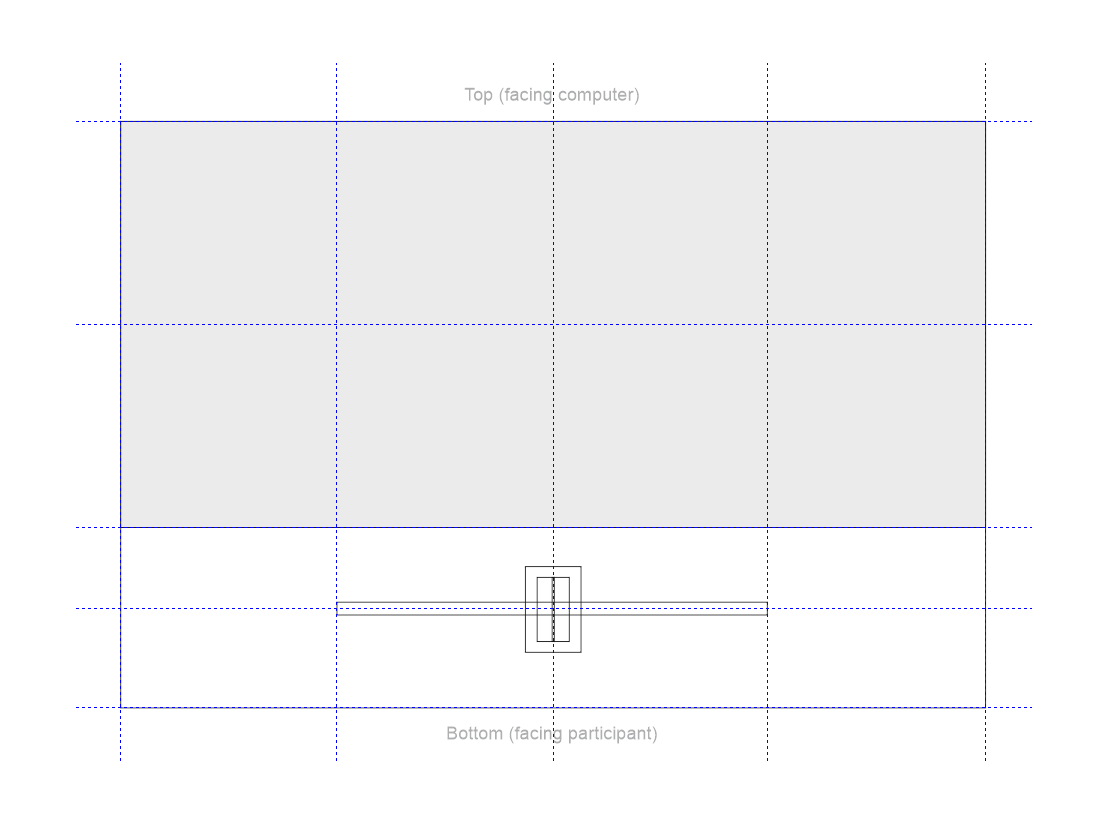 Send
us your layout and we'll make it to your design. Alternatively
give us a sketch and we'll send you a PDF proof of your design for
approval. Nothing could be simpler!
Send
us your layout and we'll make it to your design. Alternatively
give us a sketch and we'll send you a PDF proof of your design for
approval. Nothing could be simpler!Rear connectors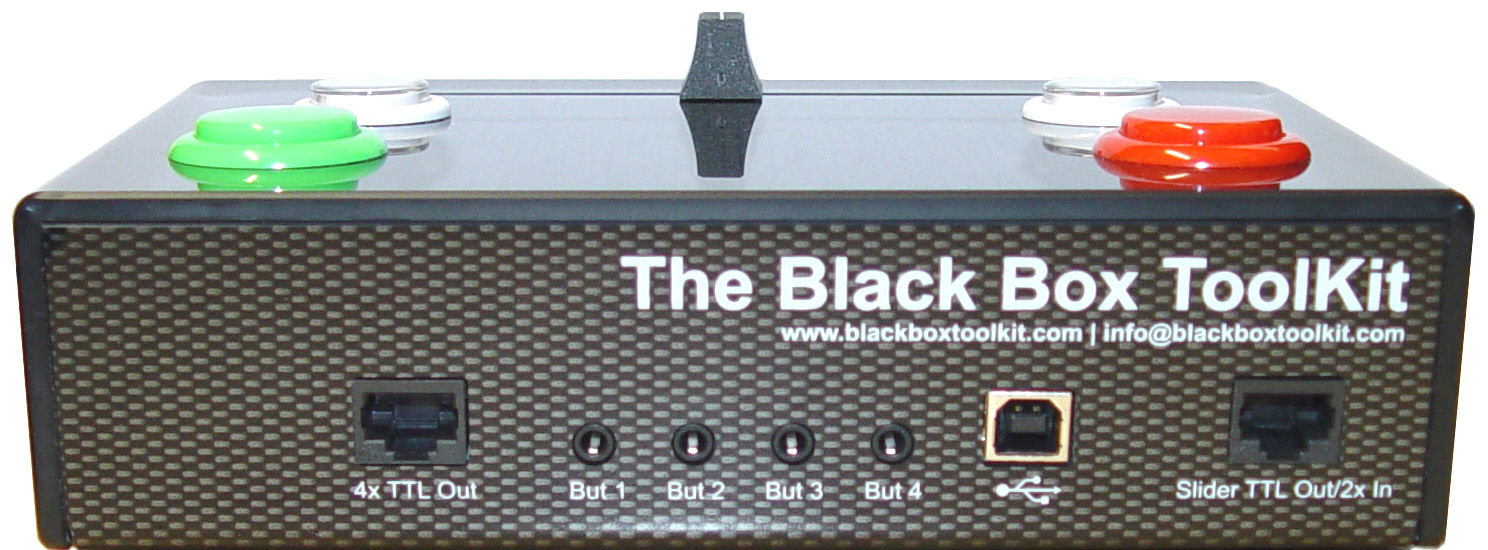
| Connector | What does it do | How can I use it |
| 4x
TTL Out (RJ45) |
A dedicated TTL line for each button that operates with sub-millisecond accuracy for TTL event marking/TTL triggers. Active high for the duration of each button press (plus smoothing window). | Ideal for +5V TTL event marking/TTL triggering of true individual button response times or for time audit, e.g. in EEG, connection to a BBTK etc. 4 bit port. |
| But
1 to 4 (3.5 mm mono sockets) |
Up to 4x external buttons of your own can be used. | When you connect your own push-to-make buttons via the 3.5 mm sockets these work alongside the corresponding response pad buttons. Participants can press either your external button or our response pad button to make a response. |
| USB (USB 'B' square socket to PC 'A' flat) |
Connects to the PC you want to accept responses on. | Each
button sends a standard key down response as might a
normal keyboard if you pressed keys 1-4 or a, b, c & d
for example. Depending on mode the slider types one of the following characters: (left) abcdefghijklmnopqrstuvwxyz[]/;'. (right) or if using all 1024 divisions a number is typed when stationary: (left) 0000 to 1023 (right). Simply set your experiment up to look for standard keyboard keystrokes and key presses to detect both button presses and slider/fader position. TTL inputs will also produce keypresses similar to button presses and are ideal for synchronization between equipment. |
| Slider TTL Out/2x In | A
5 bit port encodes the binary position of the sliders in
modes 1 & 3. Two further input bits allow for triggers and synchronization signals from external equipment. |
TTL
binary encoding can be used to report the position of the
slider/fader to any device that can accept TTL digital
I/O, e.g. in EEG, connection to a BBTK etc. 5 bit port. Two input lines allow for keystrokes to be typed when +5V signals are received. These are equivalent to a button press where a keystroke will be held down while a +5V TTL signal is received and key up when going back to 0V. |
Technical specifications
|
|
*Remember although our USB response pads are millisecond accurate and help reduce RT variability in your experiments they can't automatically correct for any mistimings that are inherent within the experiment generator you use. Hardware capable of sub-millisecond accuracy. Timing accuracy tied to PC or experiment generator used.
Unless otherwise labelled, all products offered for sale by The Black Box ToolKit Ltd are for academic study and/or research use only.

